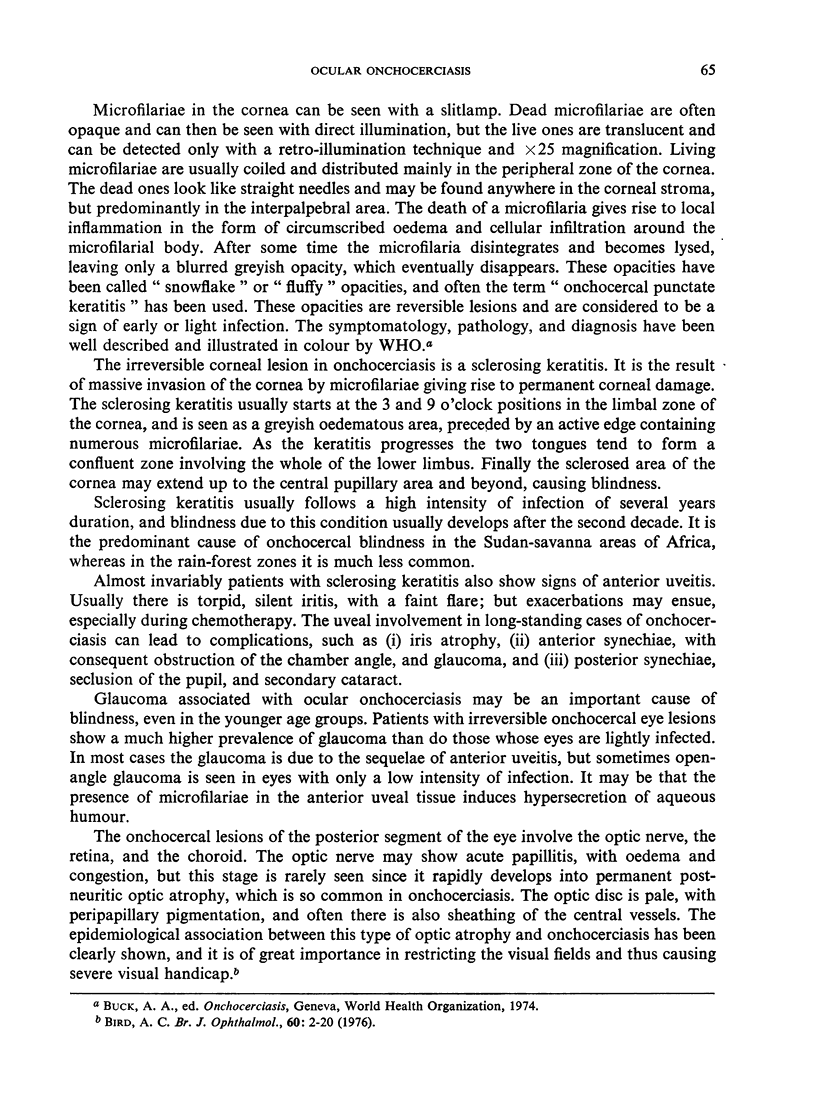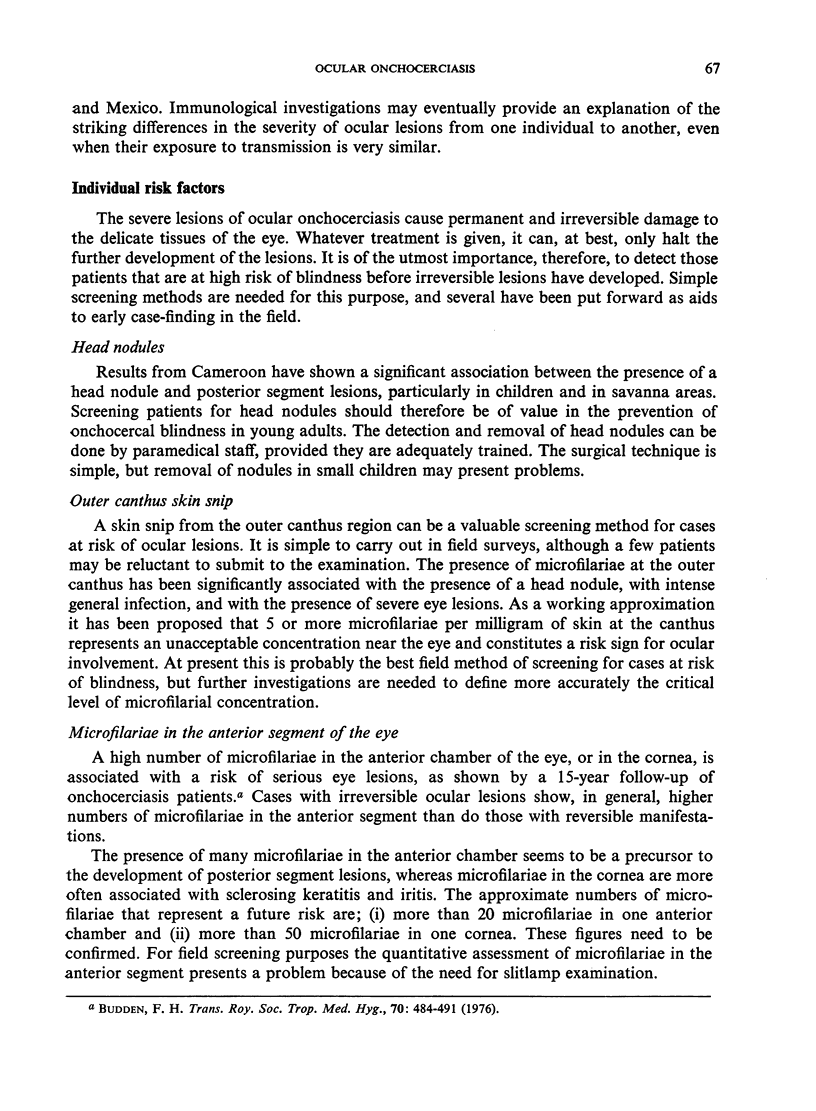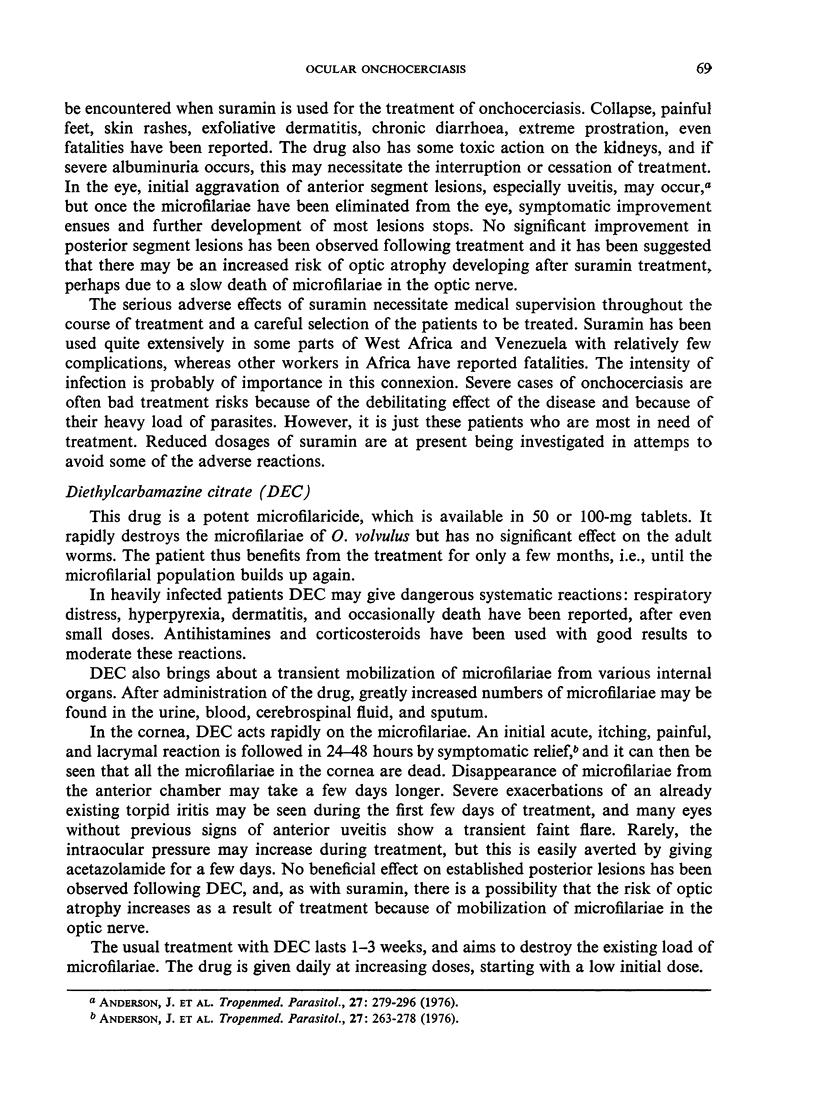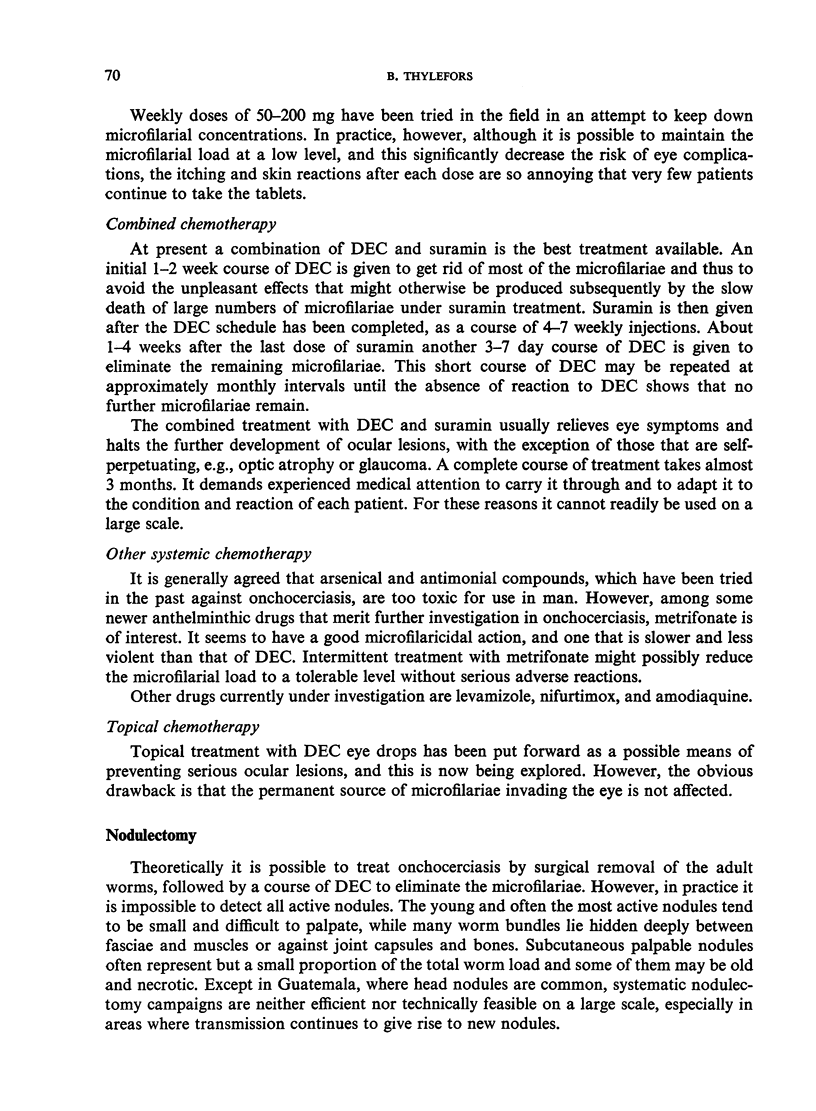Abstract
Well over 20 million people in the world are infected with Onchocerca volvulus and it is probable that 200 000-500 000 people are blind as a result of this infection, which is the most important cause of blindness in certain areas of Africa and Latin America.
Treatment of the disease is difficult and often produces serious adverse reactions in the patient. Combined use of diethylcarbamazine citrate and suramin is still the most suitable form of treatment. Screening for the early detection of cases at high risk of ocular manifestations must be organized, and their treatment undertaken, if blindness is to be avoided.
Prevention of ocular onchocerciasis is feasible, using vector control methods to reduce transmission, but the procedures are costly and may have to be maintained for many years.
Research is needed to improve treatment and to find a chemoprophylactic agent or a preventive vaccine.
Full text
PDF










Selected References
These references are in PubMed. This may not be the complete list of references from this article.
- Anderson J., Fuglsang H., de C Marshall T. F. Effects of diethylcarbamazine on ocular onchocerciasis. Tropenmed Parasitol. 1976 Sep;27(3):263–278. [PubMed] [Google Scholar]
- Anderson J., Fuglsang H., de C Marshall T. F. Effects of suramin on ocular onchocerciasis. Tropenmed Parasitol. 1976 Sep;27(3):279–296. [PubMed] [Google Scholar]
- Bird A. C., Anderson J., Fuglsang H. Morphology of posterior segment lesions of the eye in patients with onchocerciasis. Br J Ophthalmol. 1976 Jan;60(1):2–20. doi: 10.1136/bjo.60.1.2. [DOI] [PMC free article] [PubMed] [Google Scholar]
- Budden F. H. The natural history of ocular onchocerciasis over a period of 14--15 years and the effect on this of a single course of suramin therapy. Trans R Soc Trop Med Hyg. 1976;70(5-6):484–491. doi: 10.1016/0035-9203(76)90134-6. [DOI] [PubMed] [Google Scholar]
- Duke B. O. Reinfections with Onchocerca volvulus in cured patients exposed to continuing transmission. Bull World Health Organ. 1968;39(2):307–309. [PMC free article] [PubMed] [Google Scholar]
- Duke B. O. Reinfections with Onchocerca volvulus in cured patients exposed to continuing transmission. Bull World Health Organ. 1968;39(2):307–309. [PMC free article] [PubMed] [Google Scholar]


